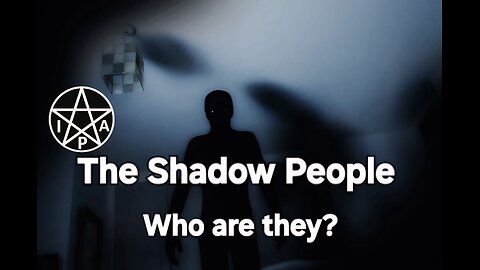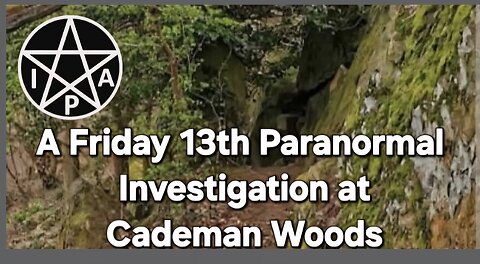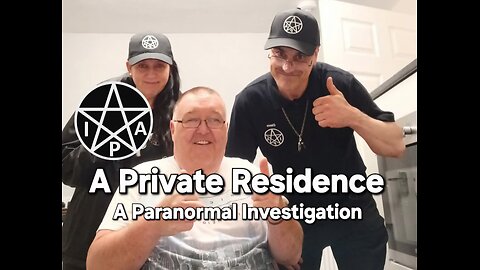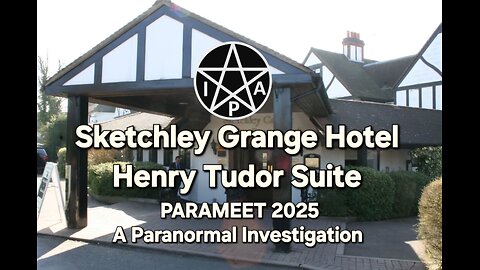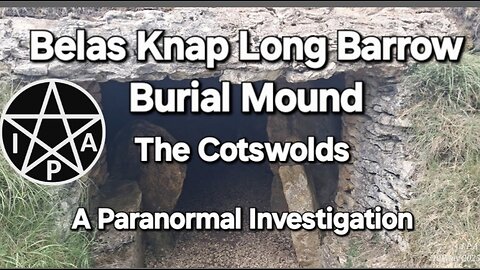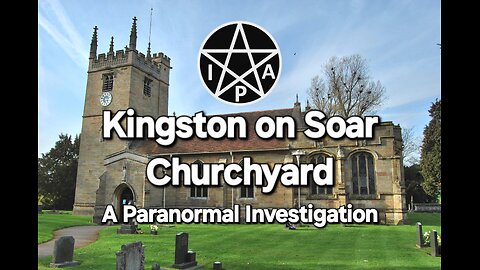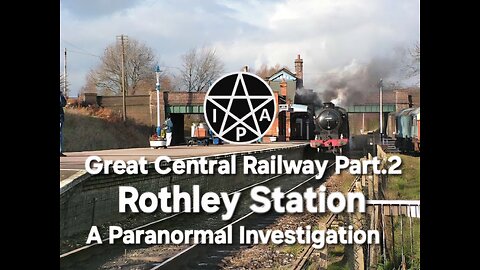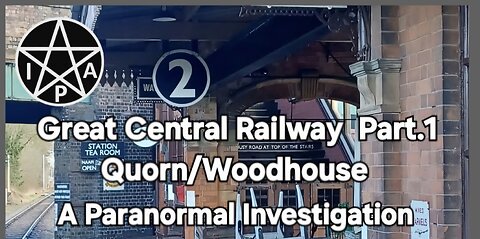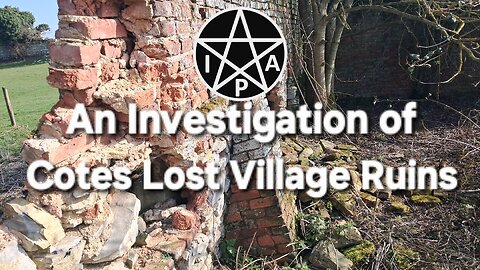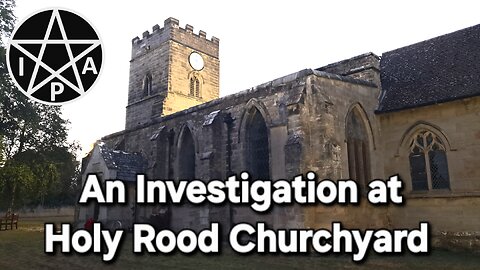
Investigating Paranormal Anomalies
40 videos
Updated 3 months ago
Our investigations on location.
Experiments with supposed haunted object's
at the I.P.A.R.C Investigating Paranormal Anomalies Research Centre.
-
Investigating Holy Rood Churchyard
 Investigating Paranormal AnomaliesHoly Rood Church in Packingtonhas roots going back to the late 11th century, with parts of the current building possibly dating to that era, though the church was formally founded around 1220. The Grade II* listed building features a late 11th or early 13th-century tower and has undergone various extensions and restorations over the centuries, notably a 19th-century chancel and a late 20th-century conversion of the rear pews into a meeting space.The church has a long history of service to the Packington community, serving as a local hub for many centuries.27 views
Investigating Paranormal AnomaliesHoly Rood Church in Packingtonhas roots going back to the late 11th century, with parts of the current building possibly dating to that era, though the church was formally founded around 1220. The Grade II* listed building features a late 11th or early 13th-century tower and has undergone various extensions and restorations over the centuries, notably a 19th-century chancel and a late 20th-century conversion of the rear pews into a meeting space.The church has a long history of service to the Packington community, serving as a local hub for many centuries.27 views -
The Shadow People- Who are they?
 Investigating Paranormal AnomaliesA video discussion about the shadow people, hat man, black mass, whatever you want to call them, they exist, they are real. Please like and follow us. Check out all our other videos #afterlife #ghost #ghostlyadventures #hauntedexploration #paranormalactivity #paranormalinvestigation #hauntedplace #ghosthunting #exploringplaces #exploration #shadowpeople #hatman65 views 4 comments
Investigating Paranormal AnomaliesA video discussion about the shadow people, hat man, black mass, whatever you want to call them, they exist, they are real. Please like and follow us. Check out all our other videos #afterlife #ghost #ghostlyadventures #hauntedexploration #paranormalactivity #paranormalinvestigation #hauntedplace #ghosthunting #exploringplaces #exploration #shadowpeople #hatman65 views 4 comments -
Cademan Woods Investigation on Friday 13th
 Investigating Paranormal AnomaliesFriday 13th Special, an investigation at Cademan Woods, rocks, trees, eerieness a good compilation for a good investigation, but is this wood haunted? Please like share and subscribe. It's totally free #afterlife #ghostlyadventures #hauntedexploration #hauntedplace #paranormalactivity #paranormalinvestigation #ghost #exploration #exploringplaces #ghosthunting96 views 1 comment
Investigating Paranormal AnomaliesFriday 13th Special, an investigation at Cademan Woods, rocks, trees, eerieness a good compilation for a good investigation, but is this wood haunted? Please like share and subscribe. It's totally free #afterlife #ghostlyadventures #hauntedexploration #hauntedplace #paranormalactivity #paranormalinvestigation #ghost #exploration #exploringplaces #ghosthunting96 views 1 comment -
Private Residence Investigation
 Investigating Paranormal AnomaliesA House in Sutton Bonington reported to us for an activity of strange happenings. please like share and subscribe its totally free # #afterlife #hauntedexploration #hauntedplace #paranormalinvestigation #paranormalactivity #ghost #ghostlyadventures #exploration #exploringplaces #ghosthunting88 views
Investigating Paranormal AnomaliesA House in Sutton Bonington reported to us for an activity of strange happenings. please like share and subscribe its totally free # #afterlife #hauntedexploration #hauntedplace #paranormalinvestigation #paranormalactivity #ghost #ghostlyadventures #exploration #exploringplaces #ghosthunting88 views -
Parameet 4 2025 A Paranormal Investigation
 Investigating Paranormal AnomaliesMay bank holiday weekend Parameet 2025. Sketchley Grange Hotel, The Henry Tudor Suite. The I.P.A team with Haunted Happenings investigate the Henry Tudor Suite. Before becoming the Sketchley Grange Hotel & Spa, the site was known as Sketchley Hall, a notable building constructed in 1892 by Charles H. Alldridge. Alldridge, who purchased the hall from the Sketchley Estate, was an enthusiast of horse racing and owned Sunloch, the 1914 Grand National winner. Tragically, Sunloch was in training for the 1920 Grand National at Sketchley when it suffered a fatal injury and was buried on the grounds. Alldridge sold the hall in 1930, and it was subsequently rebuilt in 1934. Over time, the estate transitioned from a private residence to its current function as a hotel and spa, blending its historical roots with modern amenities. Please like and follow us #afterlife #hauntedexploration #hauntedplace #paranormalactivity #paranormalinvestigation #ghost #ghostlyadventures #ghosthunting #exploration80 views
Investigating Paranormal AnomaliesMay bank holiday weekend Parameet 2025. Sketchley Grange Hotel, The Henry Tudor Suite. The I.P.A team with Haunted Happenings investigate the Henry Tudor Suite. Before becoming the Sketchley Grange Hotel & Spa, the site was known as Sketchley Hall, a notable building constructed in 1892 by Charles H. Alldridge. Alldridge, who purchased the hall from the Sketchley Estate, was an enthusiast of horse racing and owned Sunloch, the 1914 Grand National winner. Tragically, Sunloch was in training for the 1920 Grand National at Sketchley when it suffered a fatal injury and was buried on the grounds. Alldridge sold the hall in 1930, and it was subsequently rebuilt in 1934. Over time, the estate transitioned from a private residence to its current function as a hotel and spa, blending its historical roots with modern amenities. Please like and follow us #afterlife #hauntedexploration #hauntedplace #paranormalactivity #paranormalinvestigation #ghost #ghostlyadventures #ghosthunting #exploration80 views -
Belas Knap Long Barrow Investigation
 Investigating Paranormal AnomaliesPart.1 of our Paranormal Cotswolds series. This video we investigate Belas Knap Long Barrow, an Iron Age burial mound. Belas Knap is a Neolithic long barrow located near Winchcombe in Gloucestershire, England. Constructed around 3000 BC, it stands as a remarkable example of the Cotswold-Severn group of chambered tombs. The site features a trapezoidal mound approximately 54 meters long, 18 meters wide, and nearly 4.5 meters high. Key Features False Entrance: One of Belas Knap's most intriguing aspects is its elaborate false entrance at the northern end. This intricately constructed façade, with dry-stone walling and large limestone jambs and lintels, may have served to deter tomb robbers or functioned as a symbolic 'spirit door' for ritualistic purposes. Burial Chambers: The actual burial chambers are located along the eastern and western sides of the barrow and at its southern end. These chambers, formed by upright stone slabs and originally topped with corbelled roofs, were used for successive burials over time. Archaeological Discoveries Excavations conducted between 1863 and 1865, and later from 1928 to 1931, uncovered the remains of at least 38 individuals, including adults and children. Artefacts such as flint tools, pottery fragments, and animal bones were also found, indicating the site's prolonged use for ceremonial and burial purposes. Several accounts over the years mention the laughter or weeping of children near the chambered tombs—especially in the early morning or twilight. This may connect to the remains of children found during excavations in the 19th and 20th centuries. Hikers have reported hearing giggles where no one is present or fleeting glimpses of pale figures darting among the stones. Restoration and Preservation Belas Knap has undergone several restorations to preserve its structure. Notably, in the 1920s and 1930s, efforts were made to stabilize the dry-stone walling and restore the mound's original contour. Today, the site is managed by English heritage and is accessible to the public. Please like, share, and subscribe #afterlife #paranormalactivity #ghostlyadventures #paranormalinvestigation #hauntedexploration #paranormalexpert #paranormalresearch #hauntedplace #hauntedexplore #ghost #haunting84 views
Investigating Paranormal AnomaliesPart.1 of our Paranormal Cotswolds series. This video we investigate Belas Knap Long Barrow, an Iron Age burial mound. Belas Knap is a Neolithic long barrow located near Winchcombe in Gloucestershire, England. Constructed around 3000 BC, it stands as a remarkable example of the Cotswold-Severn group of chambered tombs. The site features a trapezoidal mound approximately 54 meters long, 18 meters wide, and nearly 4.5 meters high. Key Features False Entrance: One of Belas Knap's most intriguing aspects is its elaborate false entrance at the northern end. This intricately constructed façade, with dry-stone walling and large limestone jambs and lintels, may have served to deter tomb robbers or functioned as a symbolic 'spirit door' for ritualistic purposes. Burial Chambers: The actual burial chambers are located along the eastern and western sides of the barrow and at its southern end. These chambers, formed by upright stone slabs and originally topped with corbelled roofs, were used for successive burials over time. Archaeological Discoveries Excavations conducted between 1863 and 1865, and later from 1928 to 1931, uncovered the remains of at least 38 individuals, including adults and children. Artefacts such as flint tools, pottery fragments, and animal bones were also found, indicating the site's prolonged use for ceremonial and burial purposes. Several accounts over the years mention the laughter or weeping of children near the chambered tombs—especially in the early morning or twilight. This may connect to the remains of children found during excavations in the 19th and 20th centuries. Hikers have reported hearing giggles where no one is present or fleeting glimpses of pale figures darting among the stones. Restoration and Preservation Belas Knap has undergone several restorations to preserve its structure. Notably, in the 1920s and 1930s, efforts were made to stabilize the dry-stone walling and restore the mound's original contour. Today, the site is managed by English heritage and is accessible to the public. Please like, share, and subscribe #afterlife #paranormalactivity #ghostlyadventures #paranormalinvestigation #hauntedexploration #paranormalexpert #paranormalresearch #hauntedplace #hauntedexplore #ghost #haunting84 views -
Kingston on Soar Churchyard Investigation
 Investigating Paranormal AnomaliesA small village on the outskirts between Loughborough and Nottingham at Kingston on Soar this churchyard of St.Winifreds is a typical design to most villages in Leicestershire. We didn't catch or detect very much here but doesn't mean it is or isn't haunted a catball activity on a baby of 6 hours grave was the only piece of activity, such a young burials. Please like and subscribe to our channel for the latest updates. #ghostlyadventures #paranormalactivity #afterlife #ghost #paranormalinvestigation #hauntedexploration #hauntedplace #hauntedchurchyard144 views 1 comment
Investigating Paranormal AnomaliesA small village on the outskirts between Loughborough and Nottingham at Kingston on Soar this churchyard of St.Winifreds is a typical design to most villages in Leicestershire. We didn't catch or detect very much here but doesn't mean it is or isn't haunted a catball activity on a baby of 6 hours grave was the only piece of activity, such a young burials. Please like and subscribe to our channel for the latest updates. #ghostlyadventures #paranormalactivity #afterlife #ghost #paranormalinvestigation #hauntedexploration #hauntedplace #hauntedchurchyard144 views 1 comment -
-
Quorn/Woodhouse Station Paranormal Investigation Part.1
 Investigating Paranormal AnomaliesThe first part in the Great Central Railway Paranormal Project. This investigation is conducted at the Quorn/Woodhouse Station. We were joined by the station master Jack Shaw and Andrew Devine. This investigation is quite long as we delve deep into the station, searching for signs that may lead to the Paranormal. ***Coming Soon*** Rothley Station Please like share and subscribe. it's totally free and helps us grow. #hauntedexploration #ghosthunting #afterlife #ghost #hauntedplace #paranormal #paranormalinvestigation #haunted #paranormalexploration326 views 2 comments
Investigating Paranormal AnomaliesThe first part in the Great Central Railway Paranormal Project. This investigation is conducted at the Quorn/Woodhouse Station. We were joined by the station master Jack Shaw and Andrew Devine. This investigation is quite long as we delve deep into the station, searching for signs that may lead to the Paranormal. ***Coming Soon*** Rothley Station Please like share and subscribe. it's totally free and helps us grow. #hauntedexploration #ghosthunting #afterlife #ghost #hauntedplace #paranormal #paranormalinvestigation #haunted #paranormalexploration326 views 2 comments -
Investigating the Cotes Lost Village Ruins
 Investigating Paranormal AnomaliesThe Ruins at Cotes A good paranormal investigation collecting a little bit of activity. History Above the Soar, close to Cotes Bridge, once stood a grand house; its ruined walls are extensive and hearth tax records tell us that it had 29 chimneys. Built around 1580, the house was the home of the Skipwiths. William Skipwith was knighted by James I on his accession to the English throne, and Charles I was entertained there in 1645. Beneath its portals, Royalist and Cromwellian armies fought for possession of the strategic Cotes Bridge. As a result of their support for the King, the family were ruined, and in 1653 the house became the property of Sir Christopher Packe, Lord Mayor of London, and staunch supporter of Cromwell. His grandson Clifton abandoned it following a fire in the early 18th century, and moved to Prestwold. The cause of the fire remains a mystery, but suspicion fell on a steward who had absconded with the rent money. Close by stood the old chapel. Here for centuries the village people had worshipped their Lord, here they had laid their loved ones to rest. On the first of August in the sixth year of the reign of Edward VI (1552), Fraunces Cave, George Vyncent and Mykell Puresey, Commissioners to the King, made a survey of all its 'goodes, plate, juells, and ornaments'. Listed are 'a challice of sylver, tow belles and a smale belle, a hand-belle, tow candellstyckes, a cope of white fustyon, a vestment of the same, three alter clothes and a corporas, tow towelles, a surples'. Nothing remains of the chapel, but the platforms on which stood the cottages and workshops of its congregation can still be seen. Theories regarding the demise of the medieval village are many and varied. It may have been swept away to make room for the new gardens and terraces; its community may not have survived enclosure of the open fields (which started in 1513 but was not completed until 1637); or they could have left their homes following the fire. T.R. Potter, in Rambles Around Loughborough (1868) says that depopulation was a result of the plague, and that the chaplin, Andrew Glen, risked his life to confine the outbreak by feeding and tending the sick himself, and that he alone dug the graves and buried the dead. On a fine summer's day, all is now calm and tranquility, but passing the site during an eerie November fog, it is difficult to cast from one's mind the tales of ghosts and hauntings which surround it – though doubtless such stories owe their origins rather less to reincarnations of the past than to the attractions of the vast quantities of strong ale reputed to have been left behind in the cellars of the old house. Please follow us150 views
Investigating Paranormal AnomaliesThe Ruins at Cotes A good paranormal investigation collecting a little bit of activity. History Above the Soar, close to Cotes Bridge, once stood a grand house; its ruined walls are extensive and hearth tax records tell us that it had 29 chimneys. Built around 1580, the house was the home of the Skipwiths. William Skipwith was knighted by James I on his accession to the English throne, and Charles I was entertained there in 1645. Beneath its portals, Royalist and Cromwellian armies fought for possession of the strategic Cotes Bridge. As a result of their support for the King, the family were ruined, and in 1653 the house became the property of Sir Christopher Packe, Lord Mayor of London, and staunch supporter of Cromwell. His grandson Clifton abandoned it following a fire in the early 18th century, and moved to Prestwold. The cause of the fire remains a mystery, but suspicion fell on a steward who had absconded with the rent money. Close by stood the old chapel. Here for centuries the village people had worshipped their Lord, here they had laid their loved ones to rest. On the first of August in the sixth year of the reign of Edward VI (1552), Fraunces Cave, George Vyncent and Mykell Puresey, Commissioners to the King, made a survey of all its 'goodes, plate, juells, and ornaments'. Listed are 'a challice of sylver, tow belles and a smale belle, a hand-belle, tow candellstyckes, a cope of white fustyon, a vestment of the same, three alter clothes and a corporas, tow towelles, a surples'. Nothing remains of the chapel, but the platforms on which stood the cottages and workshops of its congregation can still be seen. Theories regarding the demise of the medieval village are many and varied. It may have been swept away to make room for the new gardens and terraces; its community may not have survived enclosure of the open fields (which started in 1513 but was not completed until 1637); or they could have left their homes following the fire. T.R. Potter, in Rambles Around Loughborough (1868) says that depopulation was a result of the plague, and that the chaplin, Andrew Glen, risked his life to confine the outbreak by feeding and tending the sick himself, and that he alone dug the graves and buried the dead. On a fine summer's day, all is now calm and tranquility, but passing the site during an eerie November fog, it is difficult to cast from one's mind the tales of ghosts and hauntings which surround it – though doubtless such stories owe their origins rather less to reincarnations of the past than to the attractions of the vast quantities of strong ale reputed to have been left behind in the cellars of the old house. Please follow us150 views
